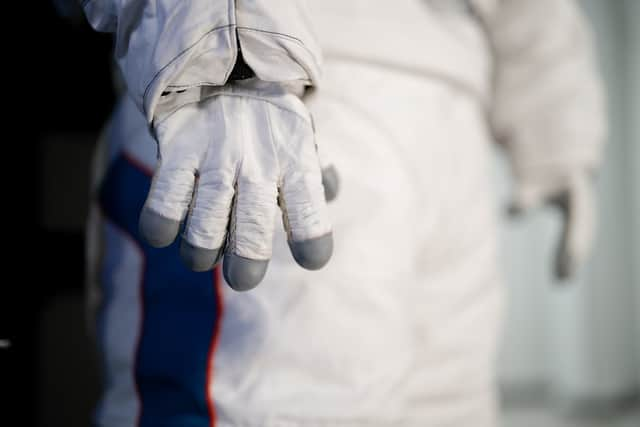Spacesuits: Axiom Space to collaborate with Prada to create suits for the 2025 Artemis mission
and live on Freeview channel 276
Prada will help design the spacesuits for the next astronauts to walk on the moon.
The Italian luxury fashion house announced on 4 October they will collaborate with Axiom, a private American space company, to develop the suits for use on the Artemis missions.
The first mission will be Artemis 3 in 2025.
Advertisement
Hide AdAdvertisement
Hide Ad

Prada has extensive experience in working with soft goods, and the latest fashion industry as well as other technologies that would help with the suits.
Michael Suffredini, chief executive of Axiom Space said: "While it doesn’t seem obvious what the technological reasons are for collaborating with a company like Prada, they’re more than just a fashion company. They actually do quite a bit of technologically advanced things.”
Prada will help with the outer layer of the spacesuit, which has to protect the suit's inner layers from the hostile environment of space, without hindering its mobility.
“When it comes to the design side of that piece of it makes a lot of sense because Prada has a lot of experience in the design, the look and feel,” Suffredini said. “More importantly, there’s these technological challenges to try to overcome as well.”
Advertisement
Hide AdAdvertisement
Hide AdLorenzo Bertelli, Prada Group marketing director said: “The suit, I think, is a perfect representation of something where you need a holistic approach. We have a lot of know how in how to package fabrics together to create better mobility.”
Prada has expertise in composites, which Axion hopes to take advantage to build parts of the suits for lighter mass.
In a joint statement, Suffredini and Bertelli said they understood each other quickly.
“Our first meeting was very interesting because we were really talking about ideas about how to work together. We didn’t really know exactly what those would be,” Suffredini said. “We wanted to work with very forward-leaning companies in other industries, not just in space.”
Advertisement
Hide AdAdvertisement
Hide Ad“We really understood each other very quickly, and I think what we’re doing is going to be a win-win for both of us,” Bertelli said. “I’m sure in the future we will have bigger projects to work together on.”
Suffredini said that the partnership with Prada could expand to other projects, such as Axiom’s commercial space station plans. “I think there’ll be a lot there’s a lot of areas where you could see Prada helping out.”
For now, though, the focus in on the spacesuit. “The most important thing I tell my team every day is that we’re going to make this schedule. We’re going to build a suit, it’s going to be a fantastic suit, but we’re going to build it on time,” Suffredini said.
The suit is being developed for Nasa under a $228.5 million task order awarded in September 2022 as part of the Exploration Extravehicular Activity Services program. In this program, Nasa will procure spacesuits for both Artemis missions and the International Space Station as services. Suffredini said Axiom Space informed NASA of its plans to work with Prada and that the agency is supportive.
Advertisement
Hide AdAdvertisement
Hide Ad“I am excited to see what the ultimate design looks like with the creativity of Prada involved,” Suffredini said. “I can’t tell you what it’s going to look like, but I feel good about it. It’s going to look very unique compared to what spacesuits formerly looked like.”
Assistant Professor Emma Horton at the University of Warwick said: “Although Prada may conjure up images of glamorous space suits, there is a much more serious side to the way in which space suits are designed. Comfort, warmth, durability and protection from the radiation are all critical factors. Astronauts must be able to move easily, maintain body temperature and contain an oxygen supply. Moon dust is notorious for its abrasive nature and was found to get into the joints of the space suits used on the Apollo missions by the likes of Neil Armstrong . Whilst these are arguably familiar challenges to materials we use on Earth, there is another challenge of designing space suits which is unique - radiation.
“Unlike the Earth, the moon has essentially no atmosphere, exposing its surface to levels of cosmic radiation that are extremely dangerous to the human body. So, Space suits must also provide an additional layer of protection. Cosmic radiation consists of high energy particles that fly through space close to the speed of light. When these particles pass through materials, the cosmic rays can excite other atoms and cause even more radiation. For example, mathematic modelling on cosmic rays with suit materials and how this affects the body turns out to be similar to modelling on how we treat cancer through proton beam therapy”.
Comment Guidelines
National World encourages reader discussion on our stories. User feedback, insights and back-and-forth exchanges add a rich layer of context to reporting. Please review our Community Guidelines before commenting.
